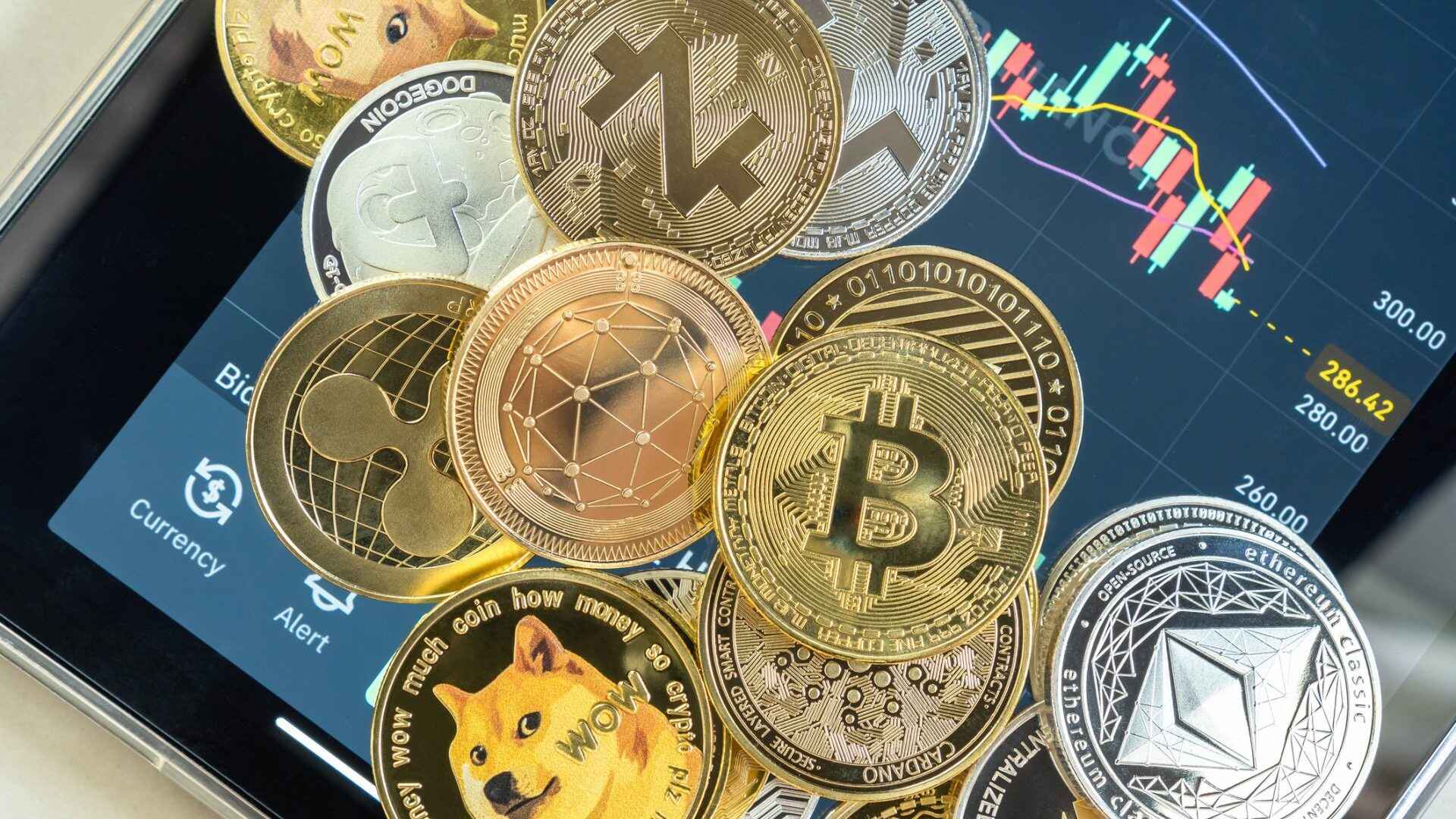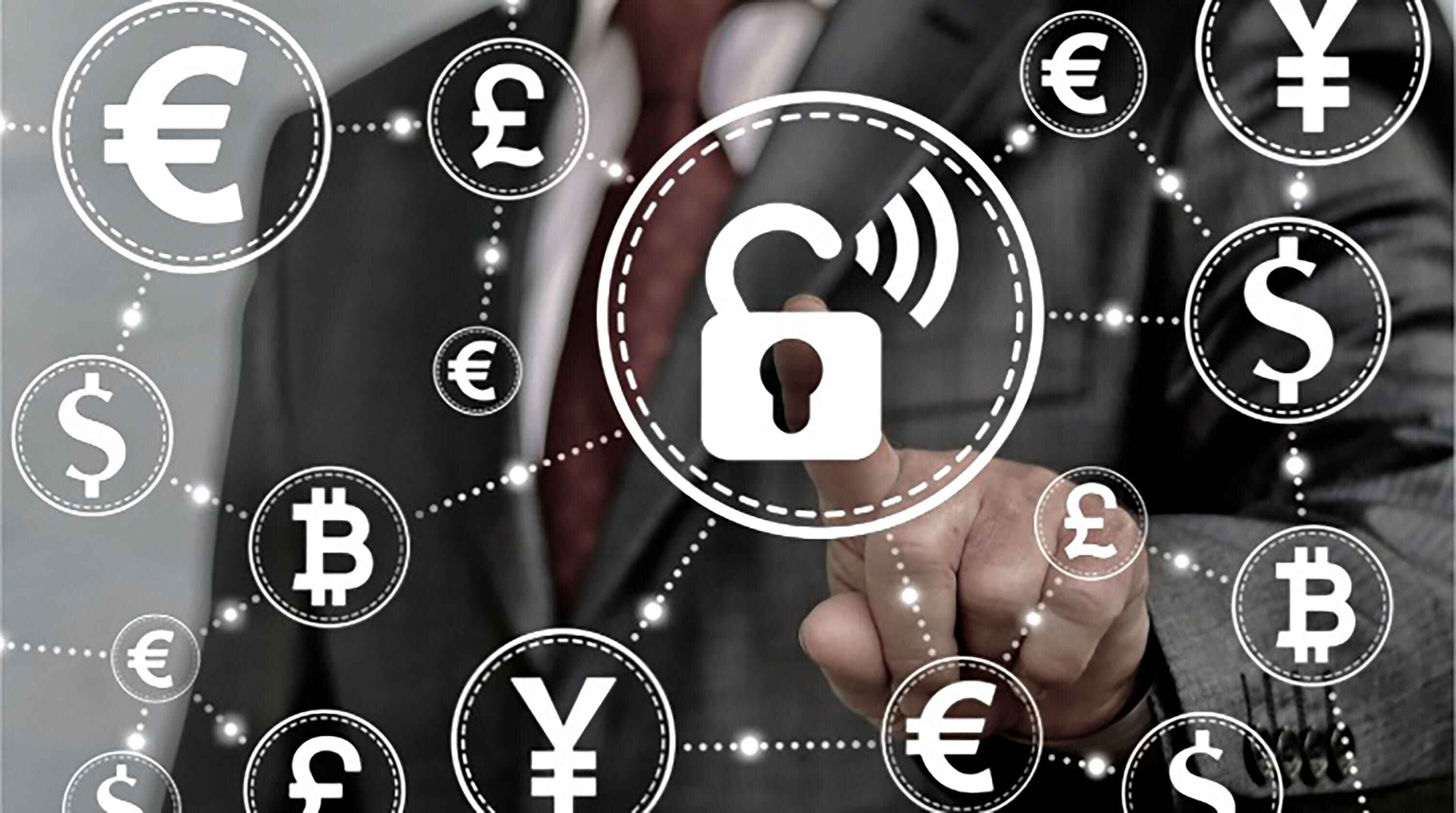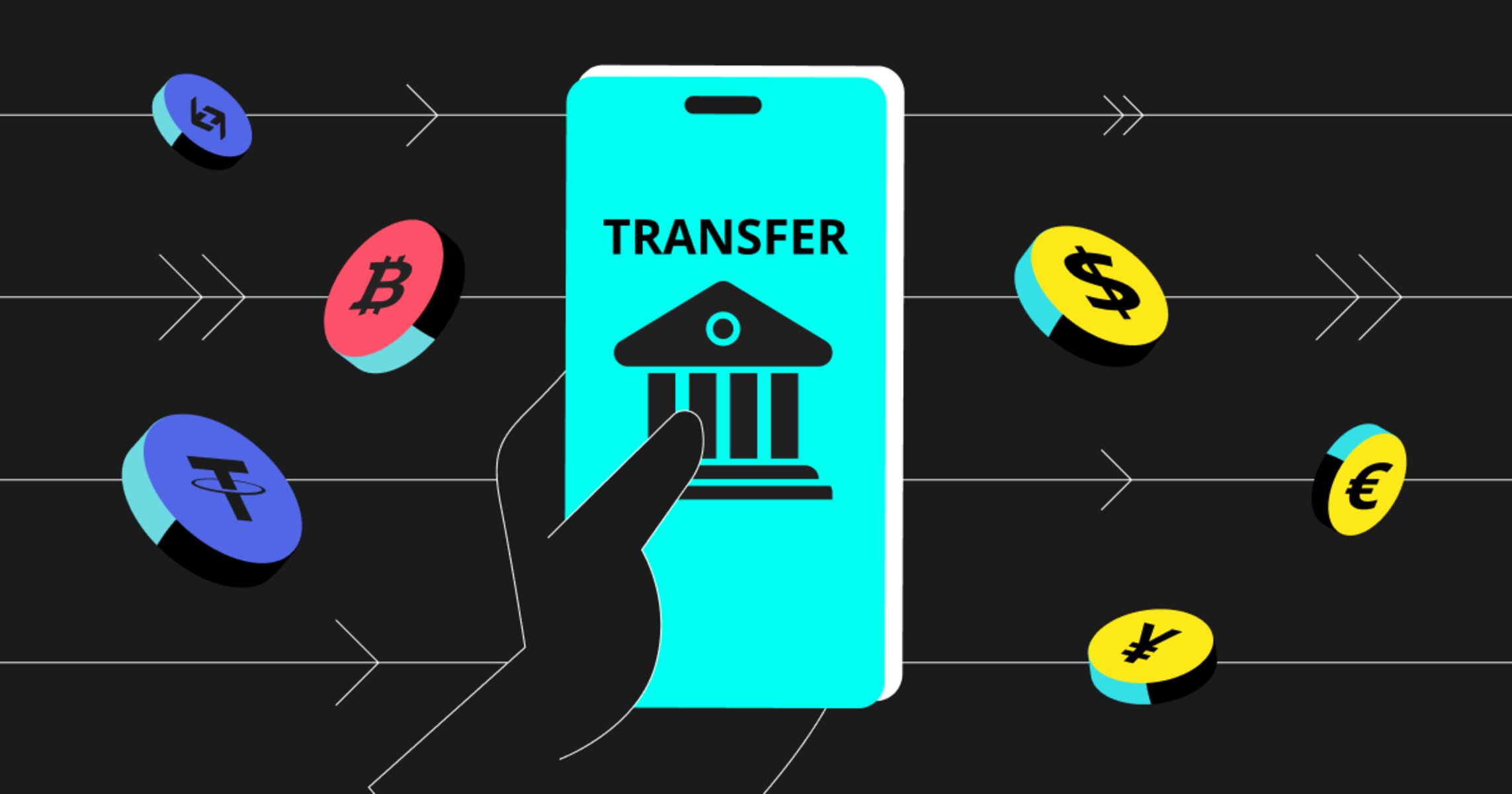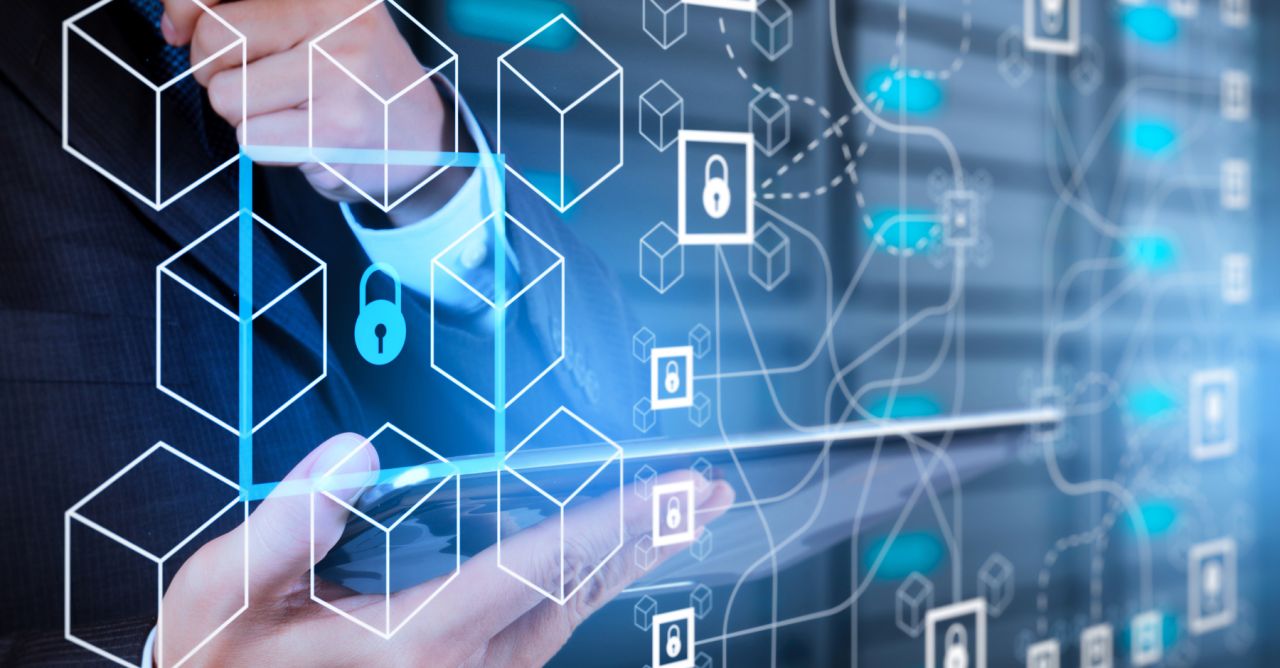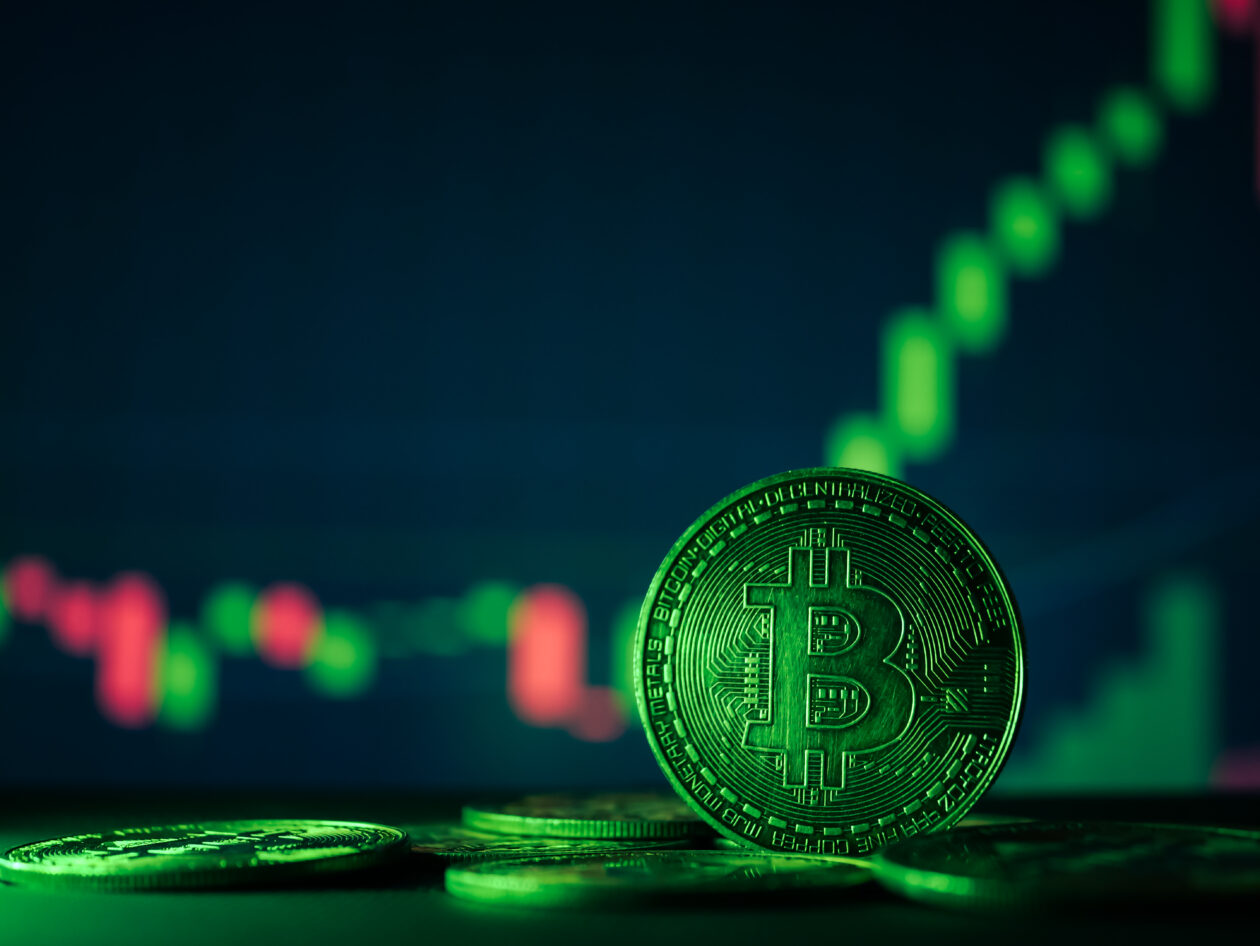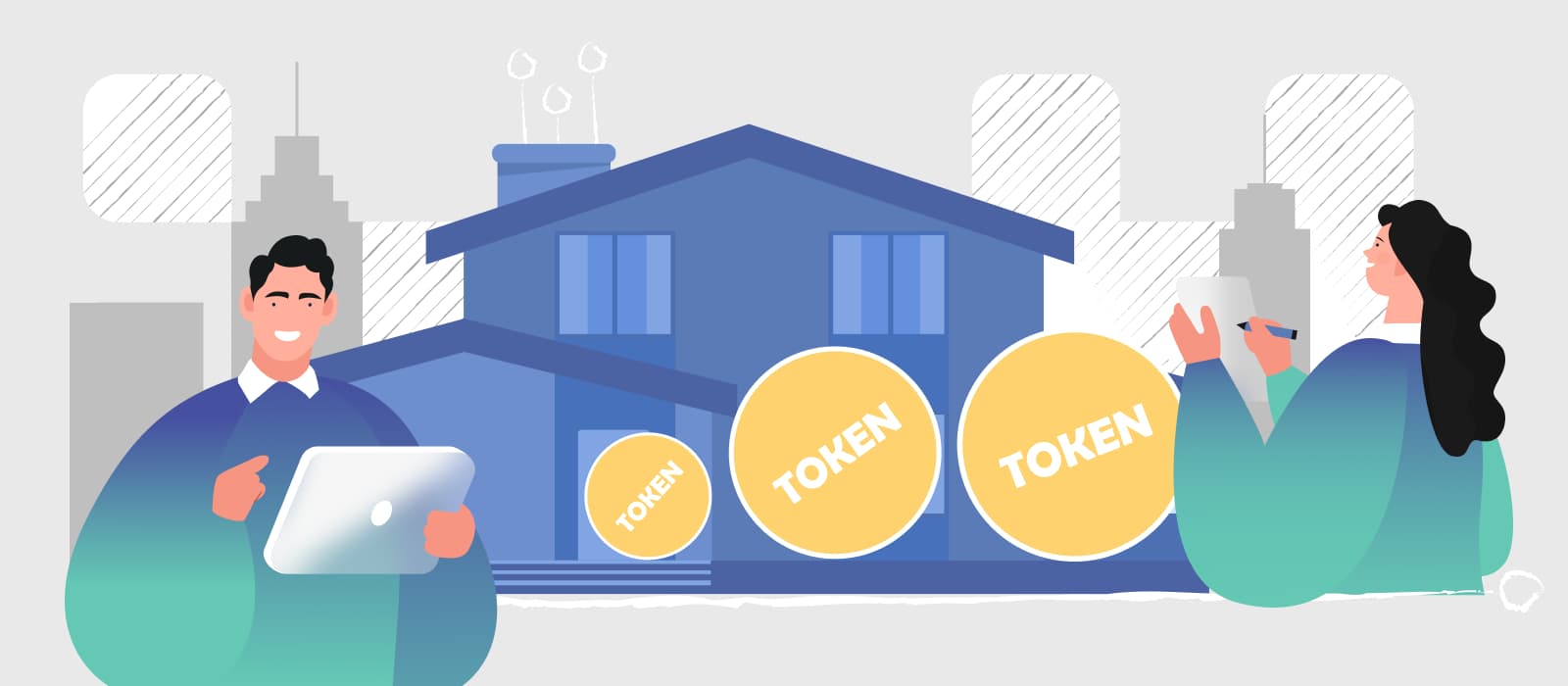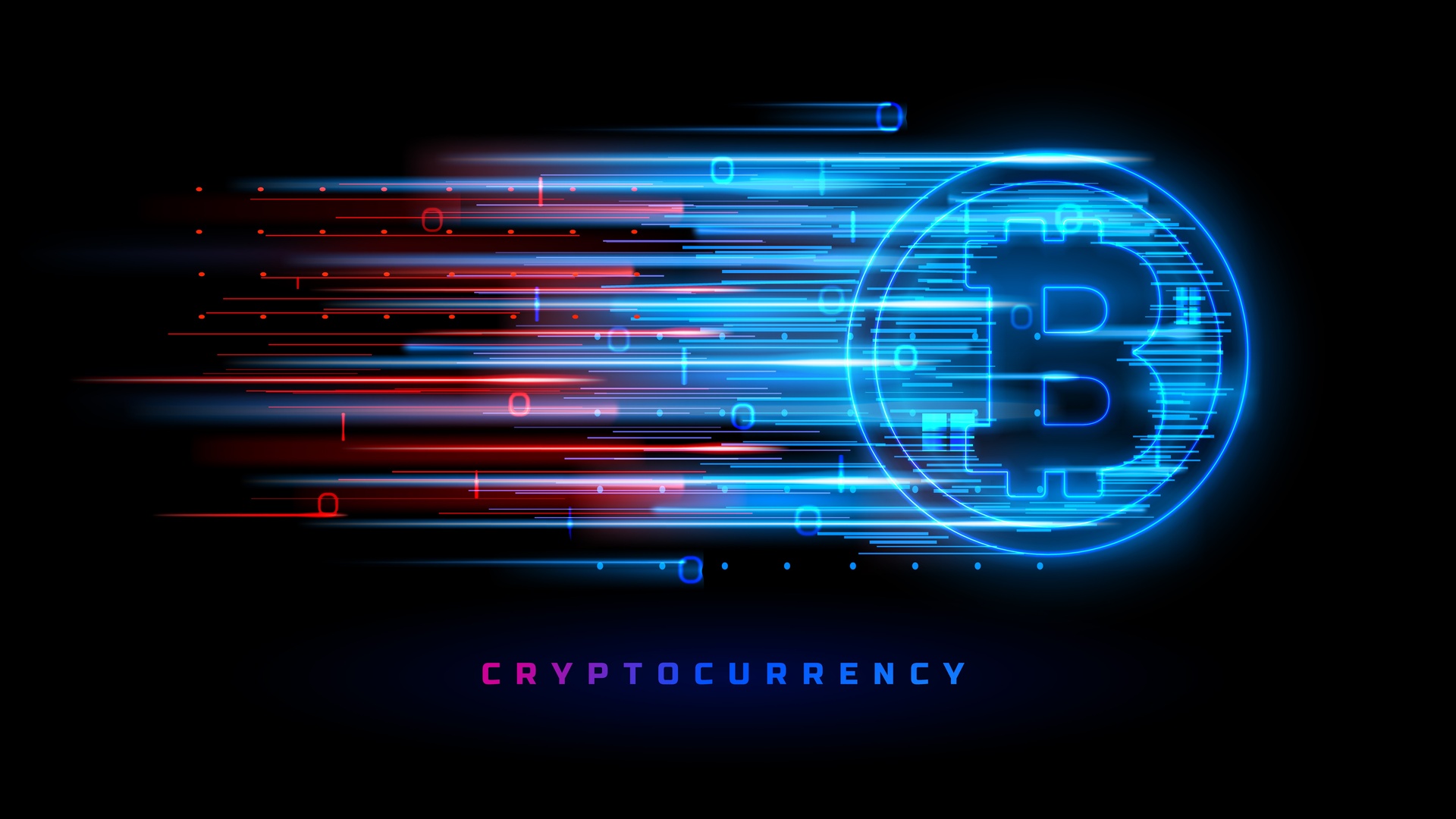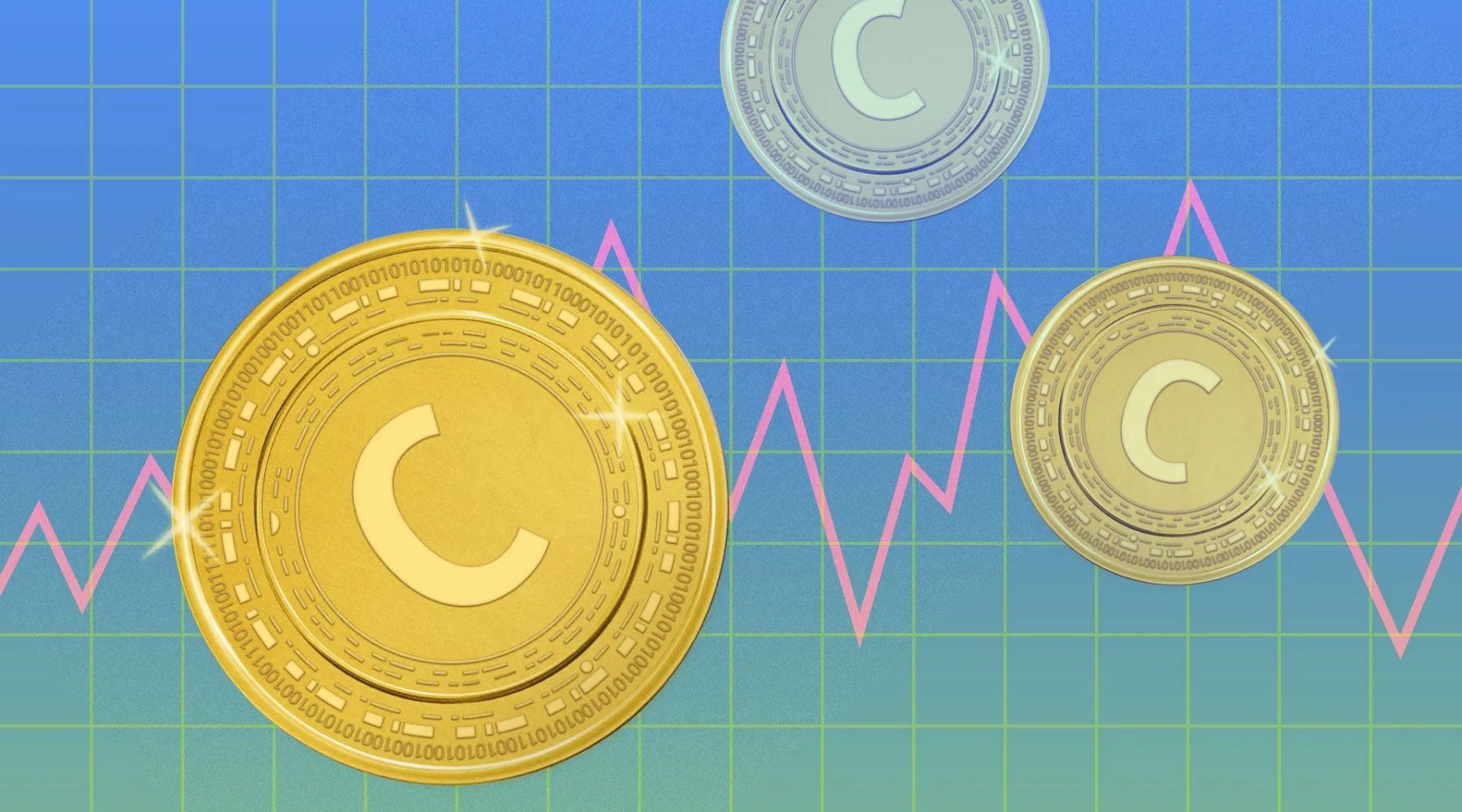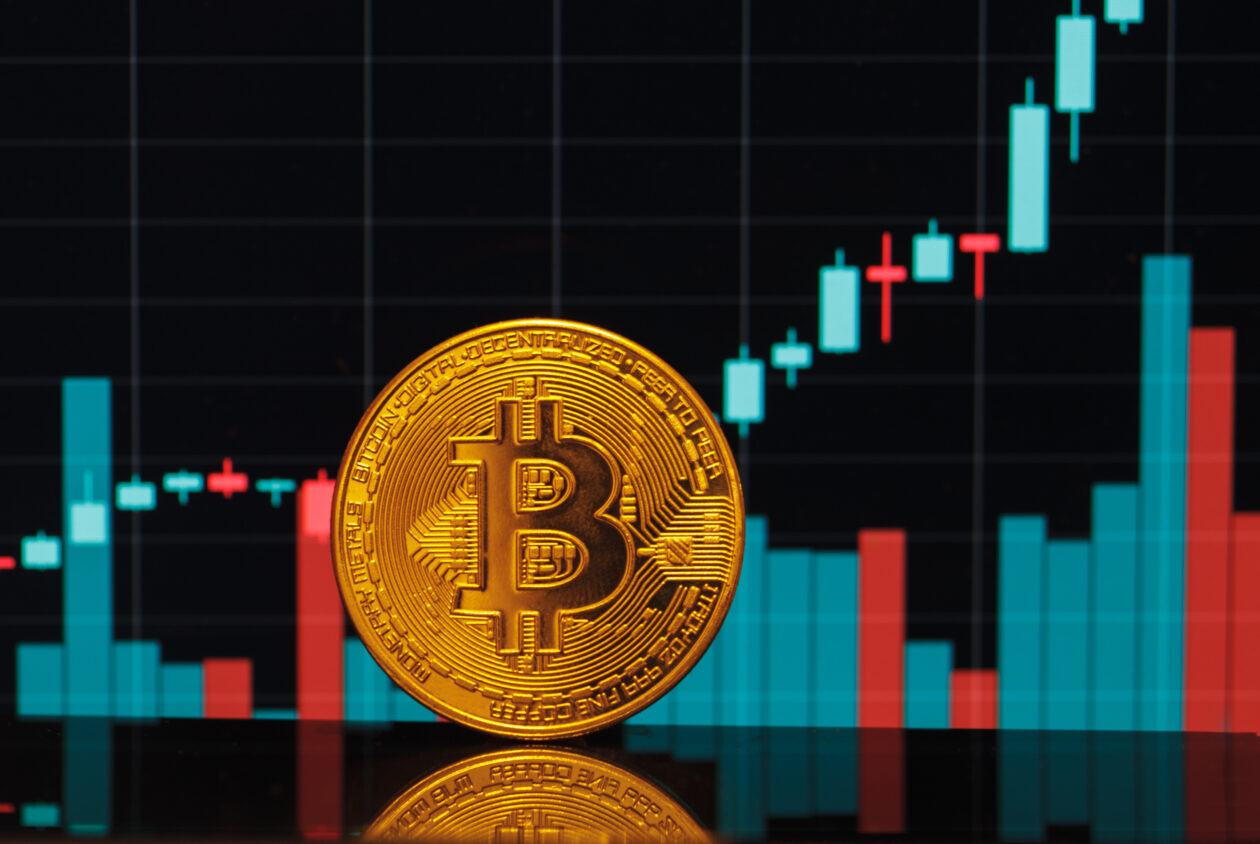Introduction
Welcome to the fascinating world of blockchain technology! As you delve deeper into the realm of cryptocurrencies and decentralized networks, you will undoubtedly come across the term “token” frequently. Tokens play a crucial role in the operation of blockchain platforms, enabling various functionalities and applications.
Tokens are digital assets or representations of assets that reside on a blockchain. They function as a medium of exchange, storing value, or representing ownership or access rights. Essentially, they are the fuel that powers blockchain ecosystems and enables the seamless transfer of value between participants.
With the rise of blockchain technology, tokens have become an integral part of numerous industries, ranging from finance and supply chain management to gaming and art. Understanding the concept and types of tokens is essential for anyone exploring the potential of blockchain technology.
In this article, we will delve into the definition, characteristics, and types of tokens, as well as the tokenization process and their various use cases.
So, buckle up and get ready to embark on a journey through the exciting world of blockchain tokens, as we unravel the mysteries and dive into the intricacies of this revolutionary technology.
Definition of a Token
Before we delve into the intricacies of blockchain tokens, let’s start with a clear definition. In the context of blockchain technology, a token is a digital representation of an asset or utility that resides on a blockchain network. It can be created, transferred, and owned by participants within the network.
Tokens serve as the digital counterparts of physical assets or intangible entities, enabling seamless transactions and interactions in a decentralized manner. They are typically built on existing blockchain platforms such as Ethereum or Binance Smart Chain, which provide the infrastructure and framework for token creation and management.
Unlike traditional currencies or physical assets, tokens are not physical objects that you can hold in your hand. Instead, they exist as data entries on a blockchain ledger. This makes them highly secure, transparent, and easily transferable between parties, while eliminating the need for intermediaries.
Furthermore, tokens have programmable features, allowing developers to define specific functions and behaviors through smart contracts. This opens up a world of possibilities for creating diverse token ecosystems with unique functionalities and use cases.
It is important to note that tokens are not limited to cryptocurrencies. While many tokens are indeed used as digital currencies, representing value and serving as a medium of exchange, they can also represent ownership rights, access to services, or even represent unique digital assets like collectibles or artworks known as non-fungible tokens (NFTs).
Now that we have a clear understanding of what a token is, let’s explore the basic characteristics that define tokens in the blockchain world.
Basic Characteristics of Tokens
Tokens in blockchain networks possess several fundamental characteristics that distinguish them from traditional assets or currencies. These characteristics contribute to their unique functionalities and make them versatile tools within decentralized ecosystems:
- Digital Nature: Tokens are purely digital assets that exist as data entries on a blockchain ledger. They do not have a physical form and can be easily transferred electronically.
- Decentralization: Tokens are managed and controlled by decentralized networks, such as blockchain platforms. This eliminates the need for central authorities or intermediaries, providing transparency and security to token transactions.
- Immutability: Once a token transaction is recorded on a blockchain, it becomes immutable and cannot be altered or reversed. This ensures the integrity and trustworthiness of token ownership and transfer.
- Fungibility: Tokens can be either fungible or non-fungible. Fungible tokens are interchangeable with each other, as they hold the same value and characteristics. Non-fungible tokens (NFTs), on the other hand, represent unique assets with distinct properties.
- Programmability: Tokens are often powered by smart contracts, which are self-executing agreements that automatically enforce predefined rules and conditions. This enables tokens to have programmable features and behaviors, such as automated payments or access controls.
- Interoperability: Tokens can be designed to interact with other tokens or decentralized applications (DApps) within the same blockchain ecosystem. This facilitates seamless integration and interoperability between different components of the system.
- Permissioning: Tokens can have varying levels of permissioning. Some tokens may be freely transferable by anyone, while others may have restricted ownership or can only be used within specific networks or platforms.
These characteristics illustrate the unique attributes of tokens in blockchain networks and highlight their immense potential for revolutionizing various industries.
Types of Tokens
Within the blockchain ecosystem, there are several types of tokens, each serving different purposes and possessing distinct characteristics. Let’s explore some of the most common types of tokens:
- Fungible Tokens: Fungible tokens are interchangeable with each other, as they are identical in value and characteristics. These tokens are typically used as currencies or medium of exchange within blockchain networks. Examples include popular cryptocurrencies like Bitcoin (BTC) and Ethereum (ETH).
- Non-Fungible Tokens (NFTs): Non-Fungible Tokens, also known as NFTs, represent unique and indivisible assets. Each NFT has distinct properties and cannot be exchanged on a one-to-one basis with other tokens. NFTs have gained significant popularity in the world of digital art, collectibles, and virtual real estate, with each token representing a one-of-a-kind item.
- Security Tokens: Security tokens represent ownership or investment in real-world assets, such as company shares, commodities, or real estate. These tokens are subject to securities regulations and provide holders with rights, such as dividends or voting power. Security tokens provide a way to digitize and trade traditional financial assets in a more efficient and transparent manner.
- Utility Tokens: Utility tokens are used to access specific products, services, or functionalities within a blockchain platform. These tokens are typically created by companies or projects to fundraise for their development and are redeemed for the services or products offered. Utility tokens provide users with exclusive rights or discounts and can be traded on exchanges.
It is important to note that these token types are not mutually exclusive, and tokens can have characteristics of multiple types depending on their design and purpose. The versatility of tokens allows for innovative applications and provides participants with diverse opportunities.
Now that we understand the different types of tokens, let’s explore the tokenization process and how tokens are created and distributed within blockchain networks.
Fungible Tokens
Fungible tokens are a type of digital asset that are mutually interchangeable with each other. This means that each token holds the same value and characteristics as other tokens within the same network. Fungible tokens are often used as currencies or mediums of exchange within blockchain ecosystems.
One of the most well-known examples of fungible tokens is Bitcoin (BTC). Each Bitcoin is identical to any other Bitcoin, and they can be subdivided into smaller units called satoshis. Similarly, Ethereum (ETH) is another fungible token that fuels the Ethereum blockchain and is used for transactions and powering decentralized applications (DApps).
When it comes to fungible tokens, the focus is not on individual identity or uniqueness, but rather on the value they hold. This allows for seamless transferability between parties without affecting the overall value or functionality of the tokens. For instance, if you were to receive 1 BTC from a friend, it would hold the same value and utility as any other 1 BTC in circulation.
The interchangeability of fungible tokens is essential for their adoption as currencies, as it ensures that each token is just as valuable as the next. Unlike physical assets, there are no distinguishing factors between fungible tokens, making them highly divisible and transferable.
Another advantage of fungible tokens is their utility in facilitating smart contracts. Smart contracts are self-executing agreements programmed on blockchain networks, enabling automated transactions based on predefined conditions. Fungible tokens can be used as a medium of exchange within smart contracts, allowing for the seamless execution of various transactions and applications.
Although fungible tokens are typically used as currencies, they can also represent other fungible assets such as loyalty points, in-game tokens, or digital gift cards. The widespread adoption of fungible tokens has paved the way for more efficient and transparent financial systems, enabling frictionless transfers and reducing the need for intermediaries.
Overall, fungible tokens play a crucial role in the blockchain ecosystem, serving as a medium of exchange and enabling the smooth functioning of decentralized networks.
Non-Fungible Tokens (NFTs)
Non-Fungible Tokens (NFTs) have taken the world by storm, revolutionizing the way we perceive and interact with digital assets. Unlike fungible tokens, NFTs represent unique and indivisible items or assets on the blockchain. Each NFT has distinct properties and cannot be exchanged on a one-to-one basis with other tokens.
NFTs have gained significant popularity in various industries, especially the realm of digital art, collectibles, and virtual real estate. Artists can create and tokenize their artwork as NFTs, allowing for easy ownership transfer and verifiable authenticity. Collectors can own one-of-a-kind digital collectibles, ranging from virtual trading cards to rare digital artifacts.
One of the unique features of NFTs is their ability to store metadata on the blockchain. This metadata can include details about the item’s origin, creator, history, and ownership. This transparent and immutable record provides provenance and proof of ownership, enhancing the value and trustworthiness of the NFT.
Another characteristic that sets NFTs apart is their ability to have programmable functionality. NFTs can have embedded smart contracts that define specific behaviors or rules. For example, an NFT representing virtual real estate can contain rules regarding the use and development of the property within a virtual world.
The market for NFTs has seen an explosion of interest, with high-profile sales and a growing community of artists and collectors embracing this new form of digital ownership. NFT platforms and marketplaces have emerged, allowing users to buy, sell, and trade NFTs, further fueling the growth of this industry.
While some critics argue that the value of NFTs is speculative or tied to hype, the unique qualities and potential applications of NFTs cannot be ignored. They have opened up new opportunities for artists, creators, and content creators to monetize and distribute their work in ways that were previously unimaginable.
As the NFT space continues to evolve, we can expect to see further innovation and adoption in industries beyond art and collectibles. NFTs have the potential to revolutionize the way we think about ownership, digital assets, and intellectual property rights in the digital age.
So whether you’re an artist, a collector, or simply curious about this new frontier, keep an eye on the world of NFTs as it continues to shape the future of digital ownership and expression.
Security Tokens
Security tokens have emerged as a regulatory-compliant and digitized representation of traditional financial assets on the blockchain. These tokens represent ownership or investment rights in real-world assets, such as company shares, bonds, real estate, or commodities.
Unlike utility tokens or cryptocurrencies, security tokens are subject to existing securities regulations, which govern traditional financial markets. This means that security token issuance and trading must comply with applicable securities laws, providing a higher level of investor protection and regulatory oversight.
Security tokens offer several advantages over traditional financial instruments. By tokenizing assets, the process of transferring ownership or trading securities becomes more efficient and transparent. Additionally, security tokens can be fractionally divided, allowing for greater accessibility and liquidity of traditionally illiquid assets.
Another advantage of security tokens is the potential for programmable functionality. By utilizing smart contracts, issuers can automate compliance and regulatory requirements, such as dividend distributions or voting rights. This reduces administrative costs and streamlines the management of securities.
Furthermore, security tokens have the potential to open up new investment opportunities, particularly for retail investors. With fractional ownership and reduced investment minimums, individuals can gain exposure to a broader range of assets that were previously only accessible to institutional investors.
The emergence of security token offerings (STOs) as a fundraising mechanism has also garnered attention. Unlike initial coin offerings (ICOs), which primarily offered utility tokens, STOs provide a regulated framework for companies to raise funds by selling security tokens. This enables companies to tap into a global investor base and facilitates more seamless and compliant fundraising.
However, it is important to note that the regulatory landscape for security tokens is still evolving. Different jurisdictions have varying regulations and requirements, which issuers and investors must navigate to ensure compliance.
As blockchain technology continues to mature and regulatory frameworks adapt, security tokens have the potential to disrupt traditional financial markets by transforming the way securities are issued, traded, and managed.
While the adoption of security tokens may take time and require further regulatory clarity, the benefits they offer in terms of efficiency, accessibility, and transparency make them a promising avenue for the future of finance.
Utility Tokens
Utility tokens, also known as app coins or user tokens, are a type of digital asset that provide access to specific products, services, or functionalities within a blockchain platform or decentralized network. These tokens are created by companies or projects to raise funds for their development and are intended to be used within their respective ecosystems.
Utility tokens are not designed to be investments or store of value like security tokens or cryptocurrencies. Instead, they offer users certain rights or benefits within the network. For example, utility tokens can grant users access to premium features, exclusive content, voting rights, or discounts on goods and services.
One of the main purposes of utility tokens is to incentivize and align the interests of network participants. By owning and using utility tokens, users contribute to the overall growth and success of the platform. This fosters a sense of community and encourages active engagement and participation.
Utility tokens are typically built on blockchain platforms that support smart contracts, such as Ethereum. These smart contracts define the rules and conditions for token usage, ensuring transparency and automation of token-related activities.
Token sales or initial coin offerings (ICOs) have been a popular method for companies to generate funds and distribute utility tokens to early adopters. However, it is important for investors to carefully assess the legitimacy and viability of a project before investing in utility tokens, as the utility of these tokens is directly tied to the success of the underlying platform.
One advantage of utility tokens is their potential for value appreciation. As the demand for a platform or service increases, the utility token associated with it may also experience an increase in value. However, it is important to approach utility token investments with caution, as their value can be volatile and subject to market dynamics.
Examples of utility tokens include Binance Coin (BNB), which is used to pay for transaction fees on the Binance exchange, and Filecoin (FIL), which enables decentralized file storage and retrieval within the Filecoin network.
Overall, utility tokens offer a unique way for companies to raise funds, incentivize user engagement, and build thriving ecosystems. As blockchain technology continues to evolve, utility tokens are expected to play an important role in shaping the future of decentralized applications and services.
Tokenization Process
The tokenization process involves transforming real-world assets or rights into digital tokens that can be recorded and transferred on a blockchain network. This process allows for fractional ownership, increased liquidity, and improved transparency of assets that were traditionally illiquid or restricted to a limited number of investors.
The tokenization process typically follows these key steps:
- Asset Identification: The first step is to identify the asset or right that will be tokenized. This can include various assets such as real estate, artworks, commodities, or even revenue streams.
- Legal and Regulatory Compliance: It is essential to ensure that all legal and regulatory requirements are met before tokenizing an asset. This includes complying with securities regulations, property laws, and any other relevant regulations specific to the asset being tokenized.
- Asset Valuation: An independent valuation of the asset is often conducted to determine its worth. This valuation establishes the basis for determining the value and pricing of the tokens.
- Token Design: The next step involves designing the token’s characteristics, such as its name, symbol, supply, divisibility, and any programmable features. This may involve defining smart contracts to govern the behavior and functionality of the tokens.
- Token Creation: Once the token design is finalized, the tokens are created and minted on a blockchain platform. The blockchain chosen for token creation will depend on factors such as scalability, security, and the specific features required for the tokens.
- Token Offering: After the tokens are created, they can be offered to investors or users through various means, such as an initial coin offering (ICO), security token offering (STO), or direct issuance to specific participants. This process allows individuals to purchase or obtain the tokens and become owners or holders of the underlying asset or rights.
- Secondary Market Trading: Once the tokens are in circulation, they can be freely traded on secondary markets, usually through cryptocurrency exchanges or specialized token marketplaces. These platforms facilitate the buying and selling of tokens, enabling investors to enter or exit their positions.
The tokenization process enables greater accessibility, transparency, and liquidity for a wide range of assets. It brings blockchain technology’s benefits, such as security, immutability, and programmability, to traditional assets, opening up new opportunities for investors and asset owners.
It is important to note that the tokenization process may have specific legal and regulatory requirements that vary depending on the jurisdiction and type of asset being tokenized. Therefore, it is crucial to consult legal and financial professionals to ensure compliance and mitigate risks during the tokenization process.
Token Contracts
Token contracts, also known as smart contracts, are an essential component of tokenization on blockchain networks. These contracts are self-executing agreements that automatically enforce the predefined rules and conditions governing the behavior and functionality of tokens.
Token contracts are typically written in programming languages, such as Solidity for Ethereum, and are deployed on the blockchain network. They contain a set of instructions and conditions that dictate how the tokens can be created, transferred, and interacted with.
One of the primary purposes of token contracts is to ensure the transparency and integrity of token transactions. By leveraging the decentralized and immutable nature of blockchain technology, token contracts eliminate the need for intermediaries and provide participants with a trustless environment.
Token contracts contain several key components:
- Token Rules: The contract defines the specific rules and conditions that govern the behavior of the tokens. This includes details such as the total supply, token symbol, decimal places, and any additional functionality or restrictions.
- Ownership and Transfer: Token contracts outline the ownership structure and define how tokens can be transferred between participants. They enforce the rules related to token ownership, ensuring that only the rightful owner can initiate transfers.
- Token Distribution: The contract specifies how tokens are initially distributed or minted. This could include allocations for founders, investors, or public sales, depending on the specific token offering strategy.
- Token Interactions: Token contracts can have additional functionality beyond simple transferability. They can define rules for token staking, voting, governance, or integration with other smart contracts or decentralized applications (DApps).
- Event Triggers: Token contracts can emit events when certain actions occur. These events provide a way for external systems or DApps to be notified of specific token-related activities and take appropriate actions.
With the execution of token contracts on the blockchain, all token-related transactions and activities are recorded and become part of the public ledger. This provides transparency and immutability, ensuring that all participants can verify and validate token transfers and activities.
It is important to note that token contracts can be audited and reviewed by developers, auditors, or the community to identify any potential vulnerabilities or flaws. This helps ensure the security and reliability of the token contracts and builds trust among users.
Token contracts play a crucial role in facilitating tokenization by providing a secure and programmable framework for the creation, management, and transfer of tokens on the blockchain.
How Tokens are Created and Distributed
The creation and distribution of tokens on blockchain networks can vary depending on the specific blockchain platform and the type of token being created. However, there are common steps and processes involved in token creation and distribution. Let’s explore the general process:
- Token Design: The first step is to design the parameters and characteristics of the token. This includes determining the purpose of the token, its total supply, the decimal places it can be divided into, and any additional features or functions that the token will have.
- Smart Contract Development: Once the token design is finalized, a smart contract is developed. The smart contract contains the rules and logic that govern the token’s behavior, such as how tokens are created, transferred, and any associated functionalities.
- Token Creation: With the smart contract in place, the token is created on the chosen blockchain platform. This involves deploying the smart contract and initiating the creation of the tokens according to the predefined parameters.
- Distribution Plan: A distribution plan is created to allocate the newly created tokens. This plan outlines how tokens will be distributed to initial investors, team members, or participants who have contributed to the project. The distribution plan may include public or private sales, airdrops, or other methods.
- Token Sale: If a token sale is part of the distribution plan, the tokens are made available for purchase. This can be done through a public initial coin offering (ICO), private sale, or crowdfunding campaign. Investors can acquire the tokens in exchange for other cryptocurrencies or fiat currencies.
- Secondary Market Trading: Once the initial distribution is completed, the tokens become available for secondary market trading. This allows token holders to buy, sell, and trade their tokens on cryptocurrency exchanges or specialized token marketplaces. The market value of the tokens may fluctuate based on supply and demand dynamics.
It is important to note that the creation and distribution of tokens should comply with relevant legal and regulatory requirements. Depending on the jurisdiction and the nature of the tokens, there may be specific regulations governing token offerings and securities laws that need to be considered.
As blockchain technology evolves, new methods of token creation and distribution may emerge. These methods may incorporate advancements such as token standards, token issuance platforms, or decentralized exchange protocols to simplify the process and enhance liquidity.
Overall, the creation and distribution of tokens enable projects to fundraise, incentivize participation, and build vibrant communities within the blockchain ecosystem.
Use Cases for Tokens
Tokens have unlocked a wide range of innovative use cases within blockchain networks, transforming traditional industries and creating new opportunities. Let’s explore some of the prominent use cases for tokens:
- Payments and Remittances: Tokens can be used as digital currencies, enabling fast and low-cost cross-border payments and remittances. By utilizing blockchain technology, token-based transactions bypass traditional intermediaries, reducing fees and settlement times.
- Decentralized Finance (DeFi): Tokens have played a crucial role in the rise of decentralized finance, offering services such as lending, borrowing, yield farming, and decentralized exchanges. DeFi platforms leverage tokens to provide financial services without relying on centralized intermediaries.
- Digital Identity and Verification: Tokens can be used to establish and verify digital identities securely. By linking identity information to tokens on a blockchain, users can maintain control over their personal data and selectively share it with trusted parties.
- Supply Chain Management: Tokens can be utilized to track and authenticate products throughout the supply chain. Each item can be represented by a unique token, allowing for transparent and immutable records of its origin, quality, and ownership history.
- Real Estate and Property Rights: Tokenization enables fractional ownership and trading of real estate assets. By representing real estate properties as tokens, individuals can invest in specific fractions, eliminate intermediaries, and create more accessible and liquid markets.
- Gaming and Virtual Assets: Tokens have revolutionized the gaming industry by enabling digital asset ownership and trading. Gamers can own and trade in-game items, characters, or virtual land using tokens, providing a new level of ownership and value for the gaming community.
- Art and Collectibles: Tokens have fueled the rise of non-fungible tokens (NFTs) in the art and collectibles market. Artists can tokenize their creations, allowing for transparent provenance and secure ownership of digital art pieces and collectibles.
- Reward and Loyalty Programs: Tokens can be utilized to incentivize customer loyalty and engagement. Companies can issue tokens as rewards for certain actions or purchases, which customers can then redeem for products, discounts, or exclusive privileges.
- Social Impact and Crowdfunding: Tokens have facilitated social impact initiatives and crowdfunding campaigns. By tokenizing projects or causes, communities can collectively fundraise and have transparent visibility into how the funds are utilized in achieving the intended impact.
These are just a few examples of how tokens are being utilized across various industries. The versatility and programmability of tokens enable the creation of new business models, financial instruments, and decentralized applications that were previously unimaginable.
As blockchain technology expands and matures, we can expect to see further exploration and innovation in token use cases, transforming how we transact, own assets, and interact within digital ecosystems.
Conclusion
Tokens have emerged as the fundamental building blocks of blockchain technology, offering new possibilities for the digital economy. These digital assets, whether fungible or non-fungible, security or utility tokens, have opened up avenues for innovation and disruption in various industries.
Through the tokenization process, real-world assets such as art, real estate, and even financial instruments can be represented as tokens on the blockchain. This tokenization enables fractional ownership, increased liquidity, and improved transparency, transforming traditional markets.
By leveraging smart contracts and decentralized networks, tokens provide enhanced security, immutability, and programmability. They enable seamless transactions, automate complex processes, and eliminate intermediaries, making transactions more efficient and cost-effective.
From enabling cross-border payments and decentralized finance to revolutionizing the art and gaming industries, tokens have demonstrated their potential to reshape the way we transact, invest, and interact with digital assets.
However, it is essential to consider the legal and regulatory aspects surrounding tokens, as different jurisdictions have varying regulations and requirements. Compliance with these regulations will ensure the sustainable growth and adoption of tokenized ecosystems.
As blockchain technology continues to evolve, so will the use cases for tokens. We can expect to see further innovation, integration, and experimentation as businesses and individuals explore the possibilities of this transformative technology.
The world of tokens is vibrant, dynamic, and ever-expanding. Understanding the different types of tokens, their characteristics, and the processes involved in their creation and distribution is crucial for both participants and observers looking to navigate this exciting and disruptive landscape.
Whether you are an investor, a developer, an artist, or simply someone curious about the potential of blockchain technology, exploring the world of tokens opens the door to a new realm of possibilities and opportunities.







